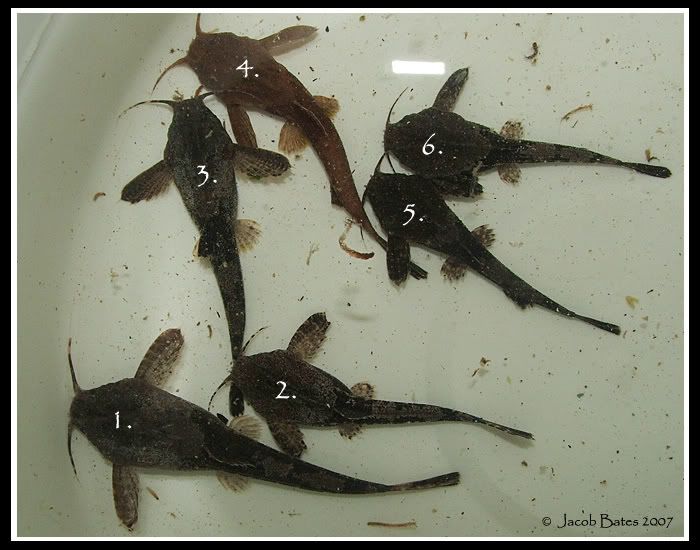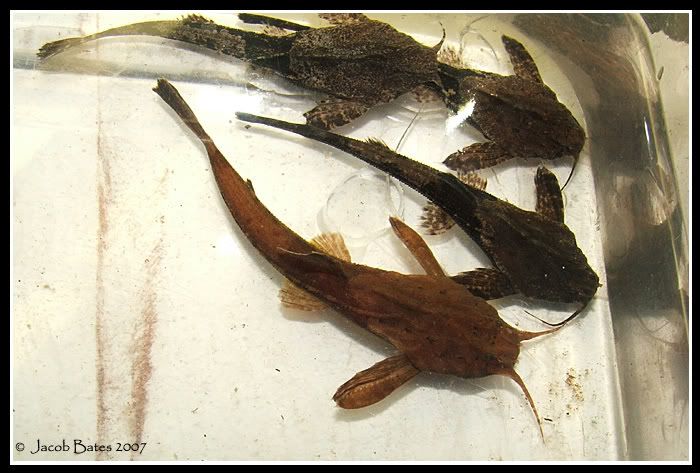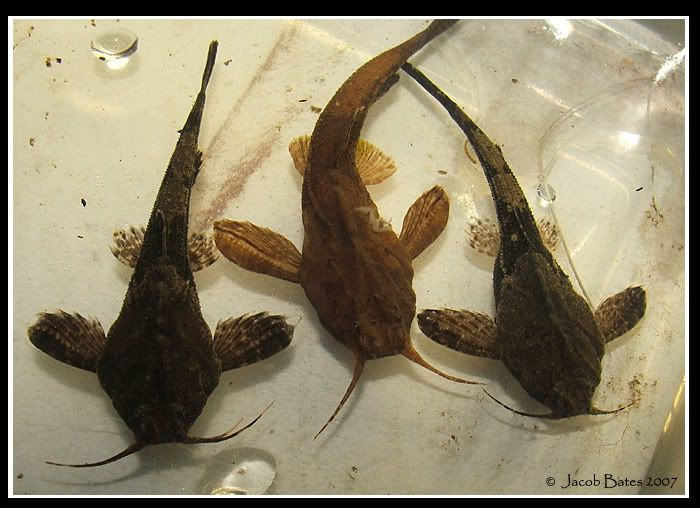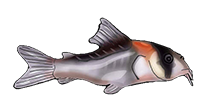I have recently purchased 6 banjo cat's from a few of my LFS's. Soon I will be setting them up into their own Biotope tank in the hopes of getting them to breed for me one day, but for now they seem happy enough stirring up the silica sand in my discus tank.
Anyway, I was hoping that somebody would be able to give me a hand in sexing these guys (if it is even possible, lol)...

Here's my guess...
1.female
2.female
3.female
4.male
5.male
6.female
Are these Bunocephalus coracoideus?
Also, one of them appears to be a slightly different species. The guy at the LFS said the 'red' ones were males and the brown ones are females, but I'm pretty sure he was making it up


Has anyone on here managed to breed these yet? I found one report, but it's in German, and I can't read that lol.
Any help would be much appreciated..
Cheers, Jake.






